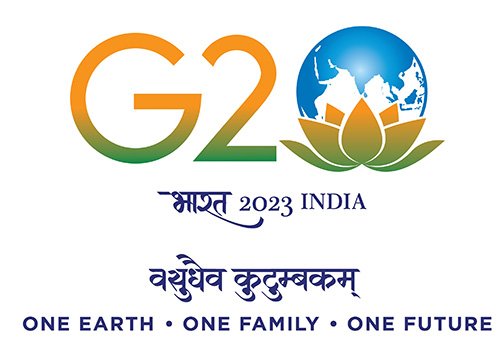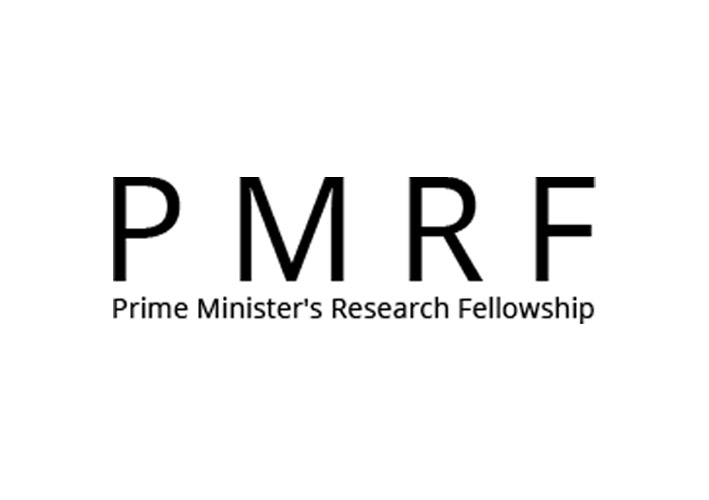Research Highlights
Optical Field Design for Solar Thermal Applications
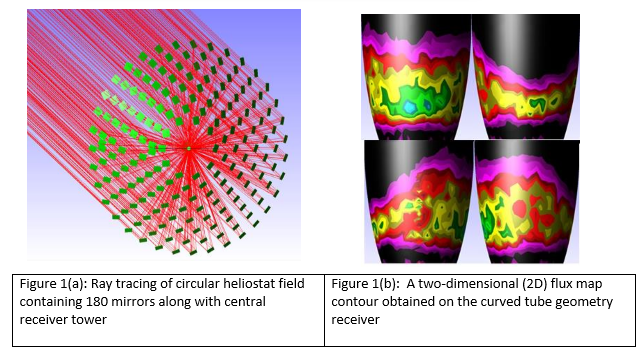
The present investigation focusses on optical layout for the design of a medium to large scale (100 kW-15 MW) solar field based on Concentrated Solar Power (CSP) technology using Heliostats with Central Receiver System (CRS). The implementation of such solar field can be carried out where direct normal incidence (DNI) is moderate to high, thus reducing the dependence on fossil fuel.
Background
Among the various renewable energies, Solar Thermal Energy (STE) has attracted attention of researcher due to its direct applicability in various industries. In particular, Concentrated Solar Power (CSP) is widely implemented for this purpose as high temperature is reached due to high optical concentration, which in turn leads to higher efficiencies and thus making it as a preferred system.
In this direction, heliostat field with a central tower provide an ideal candidate and thus designing a heliostat field layout is an essential component of it. Heliostat field comprises of large size mirrors that reflects the incident solar radiation onto a receiver as the Sun moves during the day as well as throughout the year. The challenging task is estimating the number of heliostats required to produce the desired thermal output. The parameters that affects heliostat field depend on geographical location (latitude and longitude), shadow associated with a given heliostat dimension, cosine losses, spacing between the two adjacent heliostats, blocking
Article written by: V. Narayanan
Image Credits: Sanjoy Chatterjee and Pedamallu VVNSP Raju
Link to the present work: https://cms2019.solarpacesconference.org/file/display_attachment/5e064125a7dbe4e5323c89c0962063d?filename=Sanjoy+Chatt erjee+-+Paper.pdf
Research Domain: Lasers and Optics
Rajasthani Clay Catalytic Converters for Automobiles
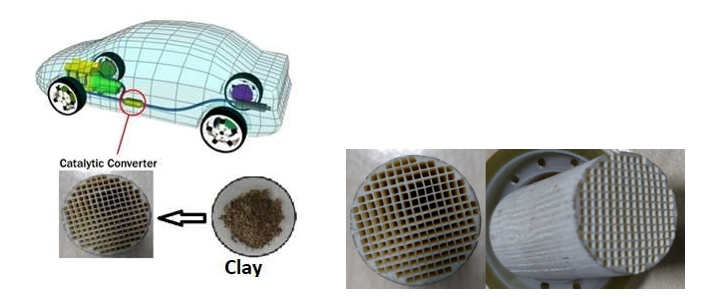
The current discovery, indicate new non-rare earth, non-noble metal based catalytic convertor using Rajasthani Clay. The catalytic convertor is developed by cleaver use Iron-Nickel-Cobalt nanoparticles in Rajasthani Clay. The metal oxides work as oxygen reservoir and could completely oxidize NOx, COx, and hydrocarbons at lower than 300oC temperature.
Background
Automobile industries are facing more and stricter emissions regulations in an effort to reduce the amount of harmful air pollutants that are released into the environment related to NOx, COx, and soot along with particulate matter. Currently, one method of reducing harmful emissions is three-way catalytic (TWC) converter that reduces harmful NOx to N2 and O2, oxidizes CO to CO2, and oxidizes residual hydrocarbons to CO2 and water. However, it requires the use of the rare-earth element Cerium (Ce) and Palladium, which are increasing in price and suffering from supply problems lately. These expensive metals make the the catalyst convertor one of the costliest part of car with price from $1000-$1500. Each catalytic convertor have about 5-7gm of pure palladium, which cost around $60 per gram more expensive than gold. Despite that cost, the performance of catalytic convertors go down with time mostly in 8-10 years, while approved life of car is about 15 years.
The research team of Prof. Sharma has been working on find an alternate solution by understanding the catalytic convertor deactivation and looking for a cheaper solution for the same. His team has found that with time, palladium particle spread over Ceria undergo surface oxidation and decompose in small particle due to high temperature oxidation process (>320 degree). So there were three challenges, reduction of temperature, replacement of palladium and cerium with non-nobel metal, and re-design the convertor to prevent metal deactivation. The Fe-Ni-Co cooperative nano-particles were used in the isolated Nanospheres (work as single site catalyst) where HafniaRajasthani Clay used as oxygen reservoir. The catalytic performance was found to be better than conventional convertor at < 300 degree.
Article written by: Rakesh K Sharma
Image credits: Rakesh K Sharma, SMCRG Lab
Link to published work (Patent): A hydrogen-annealed bimetallic oxide and implementations thereof 201911031662 Application Date 5-August-2019
Research Domain: Environmental Science
A Novel Multipath Mitigation Technique for GNSS Signals in Urban Scenarios
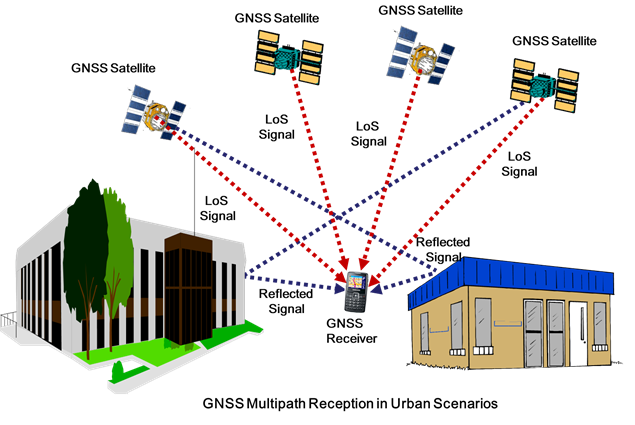
Global Navigation Satellite System (GNSS) based positioning technologies are poised to play a crucial role in providing location based services that are used for strategic purposes, emergency safety-of-life services and for commercial purposes. In urban and suburban settings, presence of multiple reflectors and scatterers like high-rise buildings, towers, vehicles, trees cause the transmitted signal to reach GNSS receiver through multiple paths. GNSS receiver while tracking the navigation signal can potentially get locked to any of the signal replicas coming from the transmitter, leading to a range error in the navigation solution. Therefore, multipath propagation poses a serious threat to the accuracy of position solutions determined by GNSS receivers.
In a recent study, Professor Arun Kumar Singh and his group from the Indian Institute of Technology (IIT) Jodhpur has proposed a novel multipath mitigation technique that provides significant improvements in range accuracies over the current state of the art techniques like Narrow Correlator (NC) and High Resolution Correlator (HRC) or double delta correlator. The performance improvements are valid for general multipath models encountered in the land-mobile-satellite channels. The performance guarantees include closed form expressions for the probability of correct delay estimate and simulation results for the average range error variation with respect to carrier to noise ratio (CNR), signal bandwidth and different channel settings.
The range error caused due to multipath propagation can be dealt with in two possible ways- multipath estimation or multipath mitigation. In general, multipath estimation techniques involve optimization of the conditional probability function over a range of multipath delays, amplitudes and phases; their computational complexity is very high and they are not suitable for implementation on smart devices that operate with limited power. The current state-of-the-art multipath mitigation techniques include NC and HRC. NC and HRC perform reasonably well in the scenarios where the number of multipaths is small and line of sight (LoS) component has highest amplitude amongst all multipaths. In most pertinent urban scenarios there can be large number of multipath and LoS may not always have the highest power among all the paths. Therefore, novel multipath mitigation solutions were needed to overcome limitations of current state-of-the-art techniques.
The present study, to be published in IEEE Transactions on Vehicular Technology, provides a novel multipath mitigation technique that is able to estimate ranges with a very high probability (>95%) even in the presence of multipaths. The proposed technique provides improved accuracy as compared to the currently known best multipath mitigation techniques. The performance guarantees hold for the CNR of as low as 20dB, for the typical vehicle speeds (50 Kmph) as well as for high speeds (360 Kmph), and for different multipath scenarios including urban, sub-urban, metropolitan environments.
In the proposed technique a double differentiated correlation function based histogram output is used to estimate the range. The statistical independence of channel parameters (which change after every coherence time) is exploited in order to improve the probability of correct estimate. The results are validated using both statistical models from IEEE 802.16b and measurement based land mobile satellite channel models developed through field trials by DLR Germany and also standardized by International Telecom Union (ITU). The new technique will be pave way for use of GNSS receivers in urban scenarios for future generation smart vehicles and high accuracy based location services.
Language Independent Speech Generation System
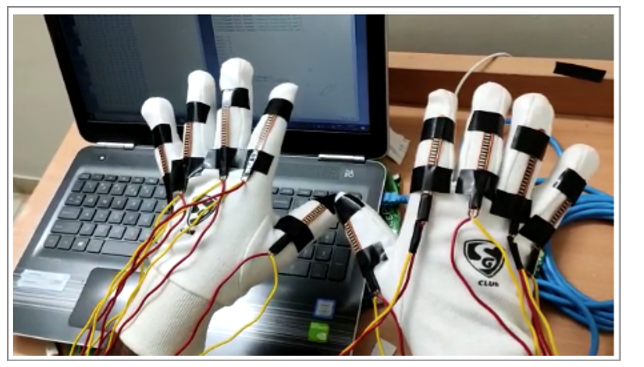
Various preordain situations result in a disease or injury to people and deprive them off with their natural ability to communicate verbally. The diseases which affect the voice and language of people may include congenital impairments, such as cerebral palsy, intellectual impairment and autism, and acquired conditions, such as amyotrophic lateral sclerosis and Parkinson’s disease. As larynx is the main organ for voice production, any illness which results in the removal of larynx, i.e, laryngectomy, will result in loss of voice. The illness may be malignancy of larynx or pharynx or severe laryngeal stenosis. The afflicted people find other means like alaryngeal methods, which include hand written notes, by simple actions (like hand or facial gestures), with esophageal speech or with aid of devices like electrolarynx or tracheo esophageal prosthesis.
The means of sign language require the use of hand- gestures and/ or facial expressions. Sign language is a mode of communication for patients who are affected since birth. In recent years, the technological advancement in the field of electro-medical devices for life support, implantable biomedical devices, and wearable medical devices have successfully provided artificial abilities to the afflicted people related to any kind of disability or impairment. The electro-medical devices, implantable biomedical devices, and wearable medical devices may include but are not limited to an artificial pacemaker, ventricular assist device, bioartificial liver, wearable dialysis device, implantable artificial kidney devices, artificial limbs, and sensory devices, such as hearing aids, optical lenses etc. The electro-medical devices when used in combination with multiple speech synthesis techniques provide an option for the people with speech and language impairment, to communicate audibly. Such electro-medical devices are known as augmentative and alternative Communication (AAC) devices or speech generation devices (SGDs). In the speech synthesis techniques, the spoken language is generated by a machine on the basis of a written input.
The present subject matter describes methods and systems for automatically generating speech which will be language independent and facilitate the communication between mute people and normal people. In an example implementation of the present subject matter, electrical signals are generated by a first set of sensors, wearable on a combination of a thumb, finger(s), and/or a wrist of a first hand of a user to produce an electrical signal depending on bending of at least one of the thumb, the finger(s), and/or the wrist of the first hand. The electrical signals are also generated by a second set of sensors, wearable on a combination of a thumb, finger(s), and/or a wrist of a second hand of a user to produce an electrical signal depending on bending of at least one of the thumb, the finger(s), and/or the wrist of the second hand.
The magnitude of the received electrical signals is compared with a plurality of pre-defined combination of magnitudes stored in a memory by using the signal processing unit. A pre-defined combination of magnitude of the plurality of pre-defined combination of magnitudes is associated to a phonetic corresponding to at least one of a consonant and a vowel. In an example implementation, the consonant and the vowel can be from Hindi language phonetics. A phonetic is assigned to the received electrical signals based on the comparison. An audio signal is generated by an audio transmitter corresponding to the assigned phonetic and based on trained data associated with vocal characteristics stored in a machine learning unit. The generation of the audio signals according to the phonetics having combination of vowels and consonants leads to the generation of speech and enables the mute people to audibly communicate with normal people. The speech synthesis technique of the present subject matter uses phonetics, and therefore the speech generation is independent of any language.
Reference: India Patent Application: 201911035856
Publication Date: 05/09/2019
(https://ipindiaservices.gov.in/PublicSearch/)
Author of the article: Dr. Sumit Kalra, Dr. Arpit Khandelwal
In collaboration with: AIIMS Jodhpur
Research paper published by Dr. Sushmita Jha in Scientific Reports

Identification of markers for Deadly Brain tumor
A multi institute team, led by Dr. Sushmita Jha, Department of Bioscience and Bioengineering, IIT Jodhpur has identified new markers for a deadly brain tumour glioblastoma. In the paper published in the international journal Scientific Reports (Nature Publishing group), Dr Jha’s team used a multipronged approach utilizing 1) data from the cancer genome atlas, 2) experimental data generated from normal cells and brain tumour cells cultured in the laboratory and 3) experimental data generated from human brain tissue to identify novel biomarkers for glioma. Team members include Dr Sushmita Paul (Assistant Professor, Dept. of Bioscience and Bioengineering, IITJ), Dr Epari Sridhar (Department of Pathology, Tata Memorial Hospital, Mumbai, Maharashtra, India), PhD students (Dr Nidhi Sharma, Ms Shalini Singh, Ms Shivanjali Saxena, Mr Ishan Agrawal), and M.Tech students (Ms Varsha Srinivasan, Ms Swetha, Mr Arvind). This study was funded by the department of science and technology (DST) and department of biotechnology (DBT) government of India. This is the first report identifying NLRP12 as a candidate prognostic marker for glioma progression leading the way for designing future therapeutic strategies
Background
Gliomas are the most prevalent intracranial tumours accounting for 80% of primary malignant brain tumors. Based on the degree of malignancy, gliomas are classified into low and high grade. Low grade glioma (LGG) specifically represents 40% of all central nervous system tumors in children. High-grade gliomas (glioblastomas) account for 59.5% of CNS tumors in India. Even after surgery, chemotherapy and radiotherapy the median survival is less than 14 months. Gliomas are tumors arising from glial cells. Glial cells constitute approximately 90% of the human brain. They are responsible for maintenance, immunity and repair. The recalcitrance of Glioblastomas (GBM) results from their ability to form new blood vessels via angiogenesis and tumor heterogeneity. The highly infiltrative behavior of GBM makes surgery nearly ineffective, since tumor cells and glioblastoma stem cells colonize the surrounding brain tissue causing relapses even at distant brain sites.
The nucleotide-binding domain, and leucine-rich repeat containing receptors (NLRs) and absent-in-melanoma 2 (AIM2) are innate immune receptors crucial for initiation and progression of several cancers. There is a dearth of reports linking NLRs and AIM2 to glioma pathology. We used a data-driven approach to identify NLRs, AIM2 and NLR-associated gene expression and methylation patterns in low grade glioma and glioblastoma, using The Cancer Genome Atlas (TCGA) patient datasets. Since TCGA data is obtained from tumor tissue, comprising of multiple cell populations including glioma cells, endothelial cells and tumor-associated microglia/macrophages we carried out cell culture experiments and immunohistochemistry on human brain tissue to identify cell specific effects. TCGA data mining showed significant differential NLR regulation and strong correlation with survival in different grades of glioma. We report differential expression and methylation of NLRs in glioma, followed by NLRP12 identification as a candidate prognostic marker for glioma progression. In the normal brain cells known as microglia function as immune cells. We found that Nlrp12 deficient microglia show increased colony formation while Nlrp12 deficient glioma cells show decreased cellular proliferation. Immunohistochemistry of human glioma tissue shows increased NLRP12 expression. Interestingly, microglia show reduced migration towards Nlrp12 deficient glioma cells.
The most significant part of the work is identification of the protein NLRP12 that is involved in the normal immune response when absent in microglia leads to aberrant cellular proliferation. Moreover, this protein is shown to be highly expressed in tumour cells. Future studies from our group are aimed at understanding the molecular signaling pathways. This may allow for development of targeted therapeutics and increased survival.
2D Materials for Potable Water Application: Basic Nanoarchitectonics and Recent Progresses

Tittle of the paper:
2D Materials for Potable Water Application: Basic Nanoarchitectonics and Recent Progresses
Small | (2024) 2407160,
https://doi.org/10.1002/smll.202407160
Dr. Pranay Ranjan
Department of Metallurgical and Materials Engineering, IIT Jodhpur
Description:
Water polluted by toxic chemicals due to waste from chemical/pharmaceuticals and harmful microbes such as E. Coli bacteria causes several fatal diseases; and therefore, water filtration is crucial for accessing clean and safe water necessary for good health. Conventional water filtration technologies include activated carbon filters, reverse osmosis, and ultrafiltration. However, they face several challenges, including high energy consumption, fouling, limited selectivity, inefficiencies in removing certain contaminants, dimensional control of pores, and structural/chemical changes at higher thermal conditions and upon prolonged usage of water filter. Recently, the advent of 2D materials such as graphene, BN, MoS2, MXenes, and so on opens new avenues for advanced water filtration systems. This review delves into the nano-architectonics of 2D materials for water filtration applications. The current state of water filtration technologies is explored, the inherent challenges they face are outlines, and the unique properties and advantages of 2D materials are highlighted. Furthermore, the scope of this review is discussed, which encompasses the synthesis, characterization, and application of various 2D materials in water filtration, providing insights into future research directions and potential industrial applications
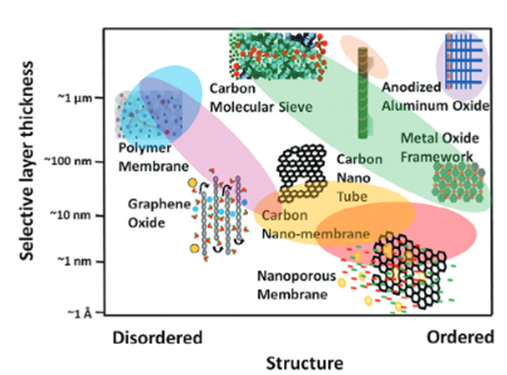
Figure 1: Existing membrane technology concerning the structure of membranes
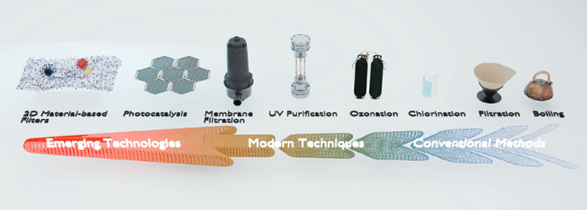
Figure 2: Water purification techniques.
Article by: Dr. Pranay Ranjan
Link : https://doi.org/10.1002/smll.202407160
Research domain: 2D Materials, Membrane, Water Filtration
Structure and exfoliation mechanism of two-dimensional boron nanosheets

Tittle of the paper:
Structure and exfoliation mechanism of two-dimensional boron nanosheets
Nature Communications | (2024) 15:6122, https://doi.org/10.1038/s41467-024-49974-8
Dr. Pranay Ranjan
Department of Metallurgical and Materials Engineering, IIT Jodhpur
Description:
Exfoliation of two-dimensional (2D) nanosheets from three-dimensional (3D) non-layered, non-van der Waals crystals represents an emerging strategy for materials engineering that could significantly increase the library of 2D materials. Yet, the exfoliation mechanism in which nanosheets are derived from crystals that are not intrinsically layered remains unclear. Here, we show that planar defects in the starting 3D boron material promote the exfoliation of 2D boron sheets—by combining liquid-phase exfoliation, aberration-corrected scanning transmission electron microscopy, Raman spectroscopy, and density functional theory calculations. We demonstrate that 2D boron nanosheets consist of a planar arrangement of icosahedral sub-units cleaved along the {001} planes of β-rhombohedral boron. Correspondingly, intrinsic stacking faults in 3D boron form parallel layers of faulted planes in the same orientation as the exfoliated nanosheets, reducing the {001} cleavage energy. Planar defects represent a potential engineerable pathway for exfoliating 2D sheets from 3D boron and, more broadly, the other covalently bonded materials.
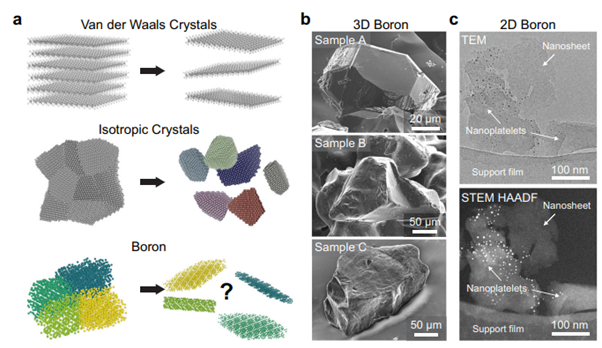
Figure 1: Liquid phase exfoliation of boron. a Schematic depiction of products through liquid-phase exfoliation from van der Waals (vdW) crystals, isotropic polycrystalline materials, and boron. b Scanning electron microscopy (SEM) images of the starting boron material: Sample A (Sigma-Aldrich), Sample B (Alfa-Aesar), and Sample C (Yamanaka Advanced Materials). c Converged beam transmission electron microscopy (TEM) image, and corresponding high-angle annular darkfield (HAADF) scanning transmission electron microscopy (STEM) image of 2D boron sheets suspended on a holey carbon TEM grid.

Figure 2: Role of planar defects in the exfoliation mechanism of boron. a TEM BF image of 3D boron (Sample C) with a high density of planar defects in the bottom right crystal grain 2. b C-BF STEM image of β-rhombohedral boron projected along the [001] zone-axis showing a sequence of parallel planar defects, including twins and stacking faults (dashed lines indicate the defect plane). The icosahedral columns are represented as red-ringed circles for easier visualization of the symmetry breaking due to the defects. The magnified images of the twin boundary and stacking fault (SF), boxed in light blue and red, respectively, are shown on the right with the faulted plane marked by the black arrows. c Model of the unit cell projected in the [001] depicting the atoms (red circles) forming the defect planes. d Density functional theory (DFT) calculated energies for the formation of the {001}-I and {001}-II surfaces from the pristine crystal and from the planar defects. e Schematic of the defect-mediated exfoliation process (viewed from the [110] orientation). The icosahedral columns are represented as red-ringed circles, stacking faults as dashed lines, and symmetry breaking of the crystal as solid lines. The black arrows represent the cleaving of the crystal from the stacking faults
Article by: Dr. Pranay Ranjan
Link : https://doi.org/10.1038/s41467-024-49974-8
Research domain: 2D Materials, Borophene
Imaging atomic-scale magnetism with energy-filtered differential phase contrast method

Tittle of the paper:
Dr. Devendra Singh Negi
Department of Metallurgical and Materials Engineering, IIT Jodhpur
Description:
The functional nano magnetic materials are indispensable for advanced electronic applications. As the nanotechnology is rapidly advancing, the size of these functional materials is also shrinking in the same proportion. Therefore, to further develop and engineers the nano magnetic materials we require a technique which can probe or image the magnetism at atomic scale sensitivity. The transmission electron microscopy (TEM) is one of the important instruments, which can image and quantify the magnetism at atomic scale. Recently developed electron magnetic circular dichroism (EMCD) and differential phase contrast (DPC) methods in TEM has enabled to access the electromagnetic information of single atom. The DPC method in TEM probes the elastic deflection of the incident convergent electron probe with the electromagnetic filed of the atom. The quantum of deflection is in proportion with the charge density or electromagnetic field of the atoms. Therefore, DPC allows to image the charge density, electromagnetism field at atomic scale. This method also enhances the imaging contrast and allow to image the light atoms very efficiently.
In this work we have developed a new method in TEM to image the magnetism at atomic scale with energy filtered electron in DPC.The energy filtered electron in TEM are the core-loss electron, which excite the core electron of an atom to unoccupied energy levels. These electron carries the information of the magnetism of the atoms. Our develop method shows that, the sensitivity of the inelastic electron is two orders of magnitude then the conventional elastic counterpart. Interestingly, the energy-filtered DPC can probe the magnetism along the probe direction. Therefore, this novel approach offers a pathway to image the in-plane and out-of-plane magnetism simultaneously at atomic scale. Our work introduces a new paradigm to image the 3-dimensional magnetism at atomic scale sensitivity in TEM.
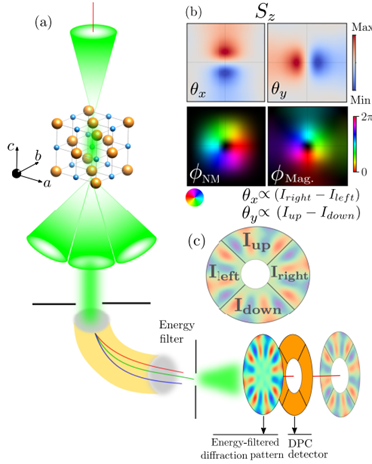
Figure1. Schematic diagram showing the EF-DPC method in TEM. A converged electron probe excites the core-electron of atom to higher energy level. These inelastic electron carries the magnetism information of the atom, which subsequently forms the diffraction pattern. These diffraction patterns are detected by the DPC detector to image the magnetic field of the atom.

Figure 2. EF-DPC of two Mn atom in LaMnAsO unit cell, showing the directional component of magnetism, referred as Sx, Sy, Sz and corresponding electron deflection in mili-radian unit. The out-of-plane magnetic field and magnetic signal shows the vortex at the centre of the Mn atoms.
Article by: Dr. Devendra Singh Negi
Link : https://journals.aps.org/prb/abstract/10.1103/PhysRevB.110.134422
Research domain: Transmission electron microscopy, Magnetism
Dr. Suraj Srivastava, Assistant Professor in the Department of Electrical Engineering, became a Fellow of The Institution of Electronics & Telecommunication Engineers (IETE) - FIETE

Dr. Suraj Srivastava, Assistant Professor in the Department of Electrical Engineering, became a Fellow of The Institution of Electronics & Telecommunication Engineers (IETE) - FIETE







